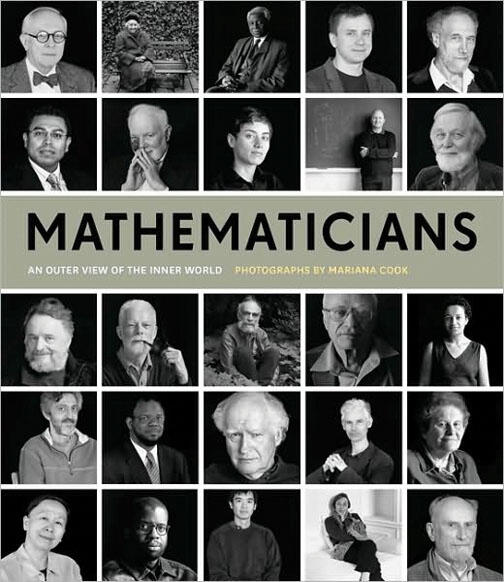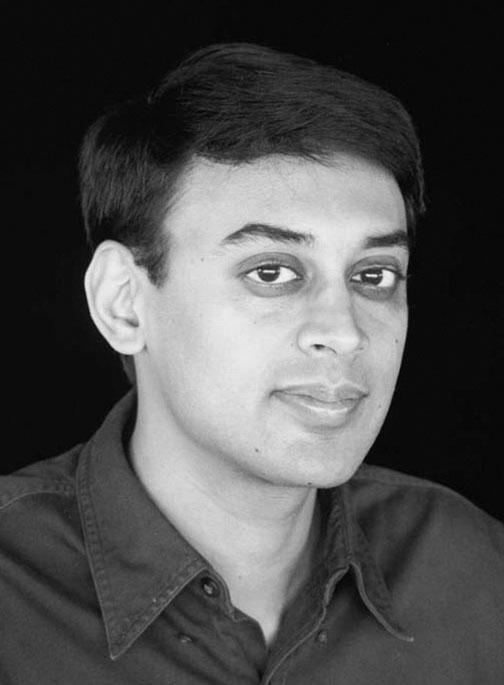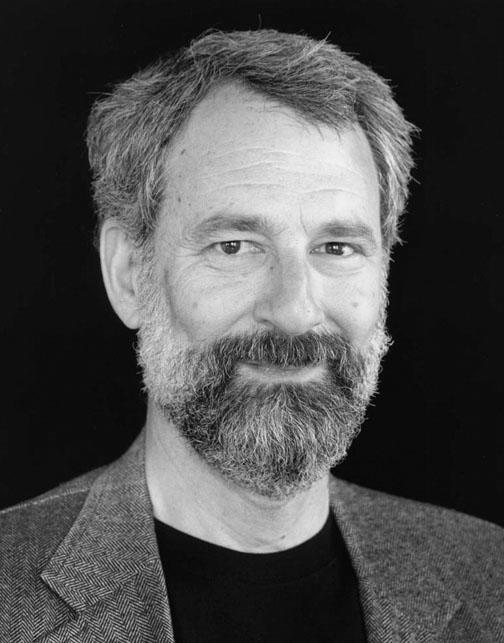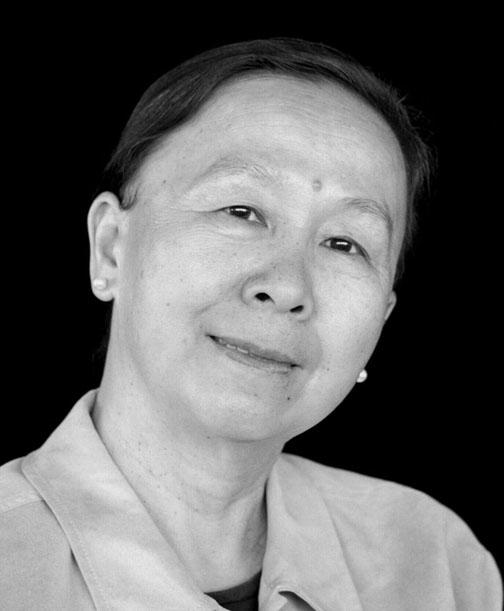New book provides a window into mathematicians' minds
Although Brandon Fradd ’83 didn’t become a mathematician, he majored in math and always has loved finding solutions to problems. At Princeton, he met stars of the field and wondered “what it was about them that let them see so much farther than I did.”
Years later, inspired to bring great mathematicians into the spotlight and help others understand what motivates their genius, Fradd asked photographer Mariana Cook to create a book of photographs of mathematicians accompanied by short autobiographical essays, like one she had done of famous scientists.
Published by Princeton University Press in August, Mathematicians: An Outer View of the Inner World captures 92 mathematicians in black-and-white images. Of the group, 23 are Princeton faculty members, including 10 alumni; another 15 alumni also are featured. In their essays, the mathematicians discuss their childhoods, how their interest in math developed, how they work, and what drives them to find answers. In a movie-star culture, Fradd thought it would be interesting to see photos of people “who are famous for how they think rather than how they look.” The black-and-white images “humanize” the thinkers, he says: “They are just people,” though people with unusual gifts.
Fradd, a New York investor, commissioned Cook to take the photos and wrote the afterword. He is donating 2,000 copies of the book to high schools. Fradd asked professors he knew at Princeton — including Robert Gunning *55, who wrote the introduction — to suggest other great minds to include in the book. The subjects range from Marie-France Vignéras of the Institut de Mathématiques de Jussieu in Paris to Arlie Petters *91, who grew up in Belize and is a professor at Duke, and Gerd Faltings, director of the Max Planck Institute for Mathematics in Bonn, Germany.
Many of those profiled seem to have cultivated their mathematical gifts at a young age — Charles Louis Fefferman *69, for example, received tenure at Princeton when he was 24. Some describe math as “elegant” and comment on the joy it brings them. Others reflect on the connection between math and art or literature.
Princeton professor Gang Tian, whose research fields include differential and symplectic geometry, describes his youth during the Cultural Revolution in China. He became fascinated with Euclidean geometry and algebra, and studied two old books on the subjects — gifts from his mother — when he wasn’t working in rice fields or factories. “I liked mathematics because of its abstractness, elegance, and neatness,” he writes.
Nicholas Michael Katz *66, a Princeton professor whose research focuses on number theory and algebraic geometry, recalls how he struggled with reading early on, how he got into a “tremendous fight” with his mother when he refused to study biology and become a doctor, and the course that turned him on to mathematics.
Another University professor, Maryam Mirzakhani, grew up in Iran dreaming of becoming a writer before turning to math. Reflecting on being a woman in this male-dominated field, she writes: “The situation is far from ideal.” She compares doing mathematics to writing a novel “where your problem evolves like a live character.”
János Kollár, a Princeton math professor and Donner Professor of Science, writes about the tools of the trade: “You do not need expensive equipment or hundreds of assistants. You are up against the unknown alone, succeeding or failing on your own wit.”
Reflections of three Princeton professors from the book by Mariana Cook (Princeton University Press). Copyright © 2009 Princeton University Press. Printed by permission.MANJUL BHARGAVA *01
Faculty member since 2003
“I always found these three subjects — music, poetry, and mathematics — very similar. This is true, to a large extent, for all pure mathematicians. In school, mathematics is generally grouped in the science category. But for mathematicians, mathematics, like music, poetry, or painting, is a creative art. All these arts involve — and indeed require — a certain creative fire. They all strive to express truths that cannot be expressed in ordinary everyday language. And they all strive toward beauty.
“The connection between music/ poetry and mathematics is not just an abstract one. While growing up, I learned from my grandfather that incredible mathematics was discovered in ancient times by scholars who did not consider themselves to be mathematicians, but rather poets (or linguists). Linguists such as Panini, Pingala, Hemachandra, and Narayana discovered some wonderful and deep mathematical concepts while studying poetry. The stories that my grandfather told me about them were very inspirational.”
CHARLES LOUIS FEFFERMAN *69
Faculty member since 1969
“I don’t choose problems; they choose me. A question will grab hold of me and I feel compelled to think about it for years or decades. On a typical day, I get no ideas, but on a good day, I get a wrong idea. Wrong ideas are ingredients in the pot. Add enough ingredients and the stew cooks. With luck, it tastes good.
“At Princeton, I usually teach a graduate class (often on my own work) and an undergraduate class (often elementary calculus). When research is going badly, it’s pleasing to think that I’m doing something useful by not giving my freshmen a hard time.”
SUN-YUNG ALICE CHANG
Faculty member since 1998; math department chairwoman
“I have always felt that mathematics is a language like music. To learn it systematically, it is necessary to master small pieces and gradually add another piece and then another. In a sense, mathematics is like the classical Chinese language — very polished and very elegant. Sitting in a good mathematics lecture is like sitting in a good opera. Everything comes together. They get to the heart of the problem and I enjoy it!”
PRINCETON FACULTY MEMBERS IN THE BOOK
Manjul Bhargava *01
William Browder *58
Sun-Yung Alice Chang
John Horton Conway
Ingrid Chantal Daubechies
Charles Louis Fefferman *69
Robert Clifford Gunning *55
Nicholas Michael Katz *66
Joseph John Kohn *56
János Kollár
Harold William Kuhn *50
William Alfred Massey ’77
John N. Mather *67
Maryam Mirzakhani
John Forbes Nash Jr. *50
Edward Nelson
Andrei Okounkov
Peter Clive Sarnak
Yakov Grigorevich Sinai
Elias Menachem Stein
Robert Endre Tarjan
Gang Tian
Andrew John Wiles
OTHER PRINCETON ALUMNI IN THE BOOK
Michael Artin ’55
Felix E. Browder *48
Kevin David Corlette ’81
Robert Fefferman *75
Michael Freedman *73
Phillip Griffiths *62
Barry Mazur *59
John Willard Milnor ’51 *54
Arlie Petters *91
Yum-Tong Siu *66
Dennis Parnell Sullivan *66
Terence Chi-Shen Tao *96
John T. Tate *50
Burt Totaro ’84
Avi Wigderson *83















No responses yet